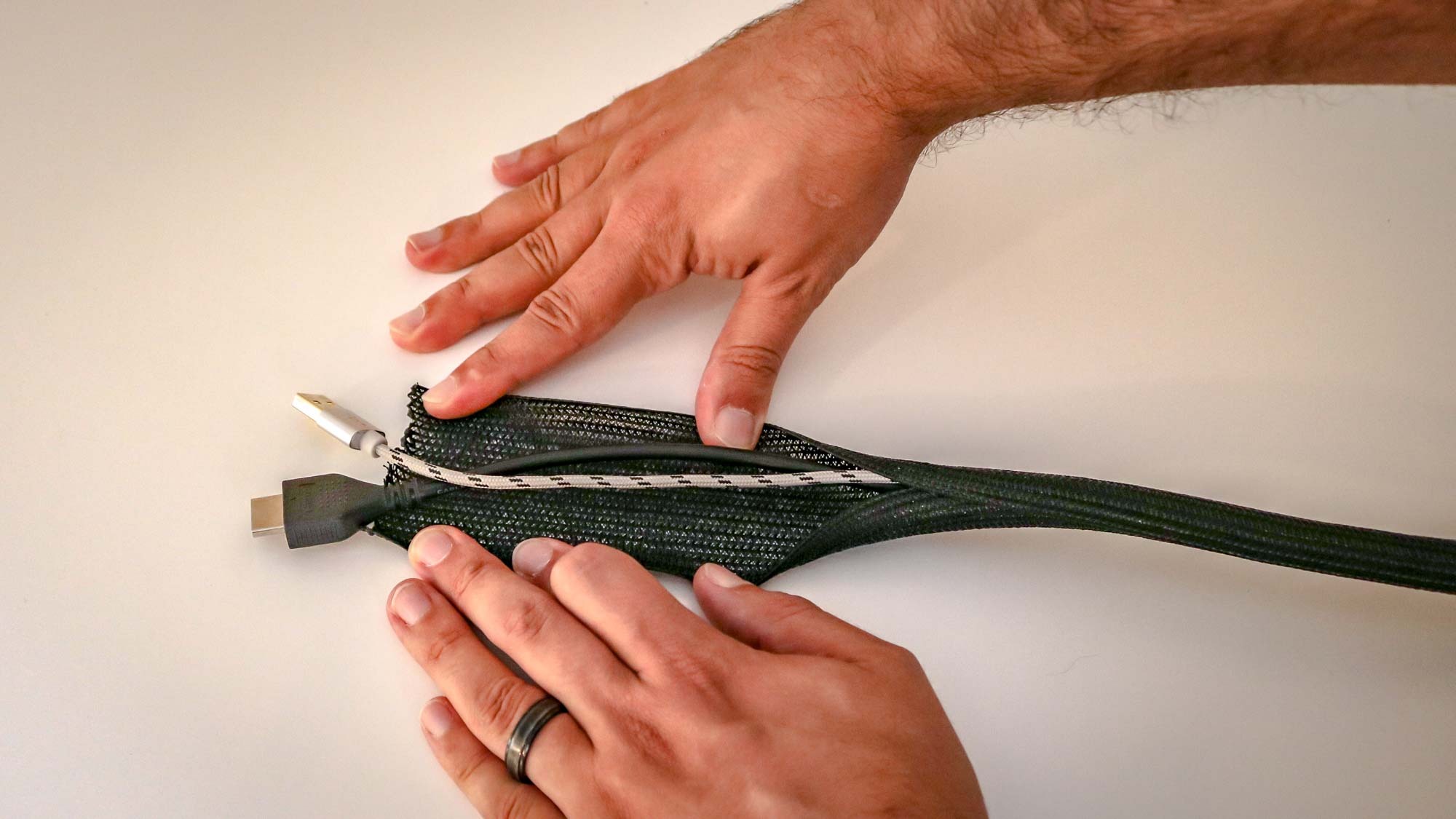This $10 accessory is a life saver for keeping your cables tidy
Say goodbye to loose and messy cables

Out of sight, out of mind is a great way to think about cable management. Messy cables can be distracting at your desk and the same holds true when you’re sitting on your couch trying to watch some TV.
While you can usually come up with a clever way to tuck your cables behind your TV or under your desk using a cable management tray, this isn’t always the case. Some cables can truly be hidden by putting holes in your wall and running them through. But not everyone can do this and going this route can be a real hassle, especially when you make a mistake.
After testing a dozen standing desks, I’ve finally found a solution that works for me and it can work for you too, regardless of what kinds of cables you’re trying to conceal. It’s also faster and easier than using cable ties to achieve the same thing.
Less hassle than cable ties
If you just need to hold a few cables together, cable ties can certainly do the trick. However, if these cables are exposed, the end result will look okay but not great. Also, the cables themselves won’t be protected.
After building and setting up quite a few of the best standing desks, I decided I needed a better way to manage my exposed cables that would also look good in pictures. To this end, I searched online for cable management accessories and stumbled upon some braided cable sleeves from a company called Alex Tech ($9.99, Amazon).
What I like about these cable sleeves in particular is that they come in a variety of different sizes from 3/8 of an inch all the way up to 1.5 inches in diameter and up to 100 feet in length. They’re also available in black, white, red and blue to match the look of your desk setup or walls.
Unlike cable ties that need to be wound around your cables, cable sleeves are even easier to use. You just open one end, put it around your cables and work your way up the length of the cables until they’re fully covered. Since these cable sleeves are also quite stiff, you can bend and mold them to your liking.

Another great thing about these cable sleeves is that you can just cut off the length you need. To prevent the cable sleeve from fraying at the cut end, you just need to hold a lighter up to it for a few seconds.
Since discovering them, I’ve now used these cable sleeves throughout my whole house. For instance, in my office where I have an Ethernet and HDMI cable running through a hole in the wall to the adjacent room, I used a white cable sleeve so that the cords can blend in with the baseboard. In my bedroom, I have a TV mounted to the wall and I used another white cable sleeve to have the power cables from the TV and soundbar blend in with the wall.
Make your wires blend in or stand out

During the summer, I turned an old monitor into a digital dashboard so that I could have the time and weather, my calendar and the latest stories from Tom’s Guide available at glance while working. In this case, I would have had to drill into my wall to hide the cables running from one of the best mini PCs to the monitor. This was the first time I used a cable sleeve to hide exposed wires and it was a huge success.
I mentioned earlier that I have an HDMI cable running through my office wall. Well, it’s actually connected to a monitor in another room so I can use my PC when I’m in the game room with my family. As black and red is one of my favorite color combinations, I used a red cable sleeve to make these wires stand out instead of blending in with the wall behind them.

If you’ve ever looked at your desk or even your entertainment center and wished things could be a bit tidier, then using cable sleeves to hide your wires could be the answer to a problem that might not have seemed easy to fix before. I plan on using them in all of my future projects and who knows, I may even do so when it comes time to build my next PC.
Sign up to get the BEST of Tom's Guide direct to your inbox.
Get instant access to breaking news, the hottest reviews, great deals and helpful tips.

Anthony Spadafora is the managing editor for security and home office furniture at Tom’s Guide where he covers everything from data breaches to password managers and the best way to cover your whole home or business with Wi-Fi. He also reviews standing desks, office chairs and other home office accessories with a penchant for building desk setups. Before joining the team, Anthony wrote for ITProPortal while living in Korea and later for TechRadar Pro after moving back to the US. Based in Houston, Texas, when he’s not writing Anthony can be found tinkering with PCs and game consoles, managing cables and upgrading his smart home.
